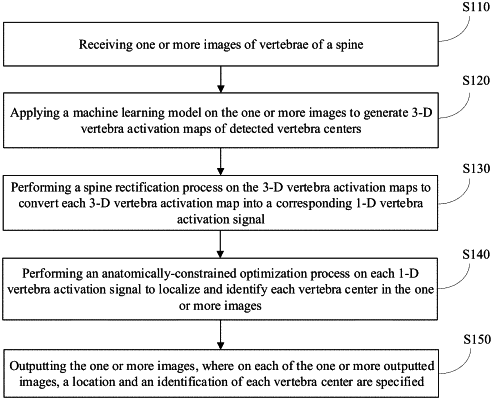| CPC G06T 7/0012 (2013.01) [G16H 50/20 (2018.01); G06T 2207/10028 (2013.01); G06T 2207/20081 (2013.01); G06T 2207/20084 (2013.01); G06T 2207/30012 (2013.01)] | 20 Claims |

|
1. A vertebra localization and identification method, comprising:
receiving one or more images of vertebrae of a spine;
applying a machine learning model on the one or more images to generate three-dimensional (3-D) vertebra activation maps {Gv} of detected vertebra centers;
performing a spine rectification process on the 3-D vertebra activation maps {Gv} to convert each 3-D vertebra activation map Gv into a corresponding one-dimensional (1-D) vertebra activation signal Qv;
performing an anatomically-constrained optimization process on each 1-D vertebra activation signal Qv to localize and identify each vertebra center in the one or more images; and
outputting the one or more images, wherein on each of the one or more outputted images, a location k and an identification vl of each vertebra center are specified, wherein vl∈[1, 26].
|